Last Chance to Catch NYC's Holiday Notalgia Train
We met the voices of the NYC subway on our nostalgia ride this weekend!


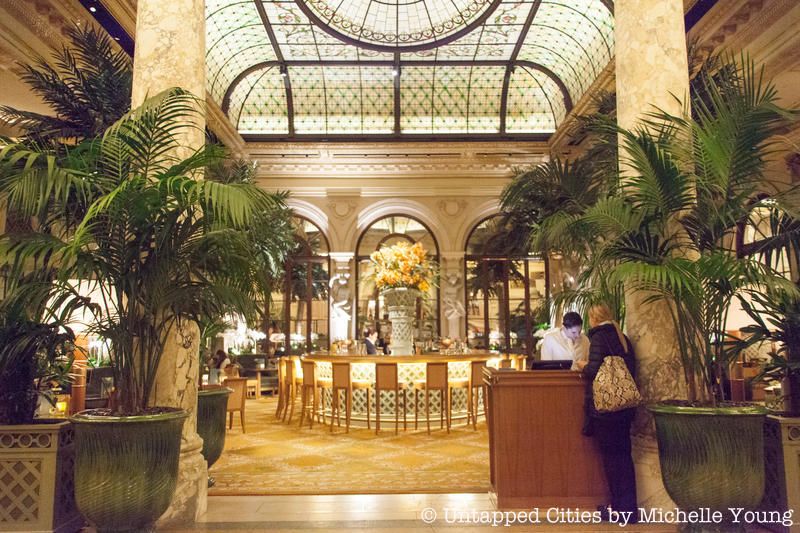
The book Interior Landmarks: Treasures of New York features 47 of the 117 interior landmarks in New York City. On the 50th Anniversary of the city’s landmark law, this beautiful book came at a timely moment as new pressures on the law have come to the forefront just this year – ranging from the “decalendaring” of landmarks (successfully stopped) to Intro 775 that aims to put time limits on how long a proposed landmark can sit on the potentials list.
As Hugh Hardy writes in the introduction of Interior Landmarks: Treasures of New York, “Our hope is that this publication will bring new awareness of the subject, confirming the wisdom of saving these designs and increasing public interest in what has been missed…In anticipation of the next fifty years of this goal, we also suggest that more careful consideration should be given before designation to how changes in the use of landmark interiors can be appropriately accommodated.” Hardy also highlights the inherent bias in the landmarks law towards non-Modernist structures and the difficulty in preserving buildings that were designed where “outside and inside are one.”
In the introduction, authors Judith Gura and Kate Wood also speak to the difficulty of landmarking interiors, which are designed to be used actively, and often undergo changes as needed for maintenance and function. Interior landmarking was not part of the original 1965 law, added in 1973 after the loss of places like the original Metropolitan Opera House. This modification of the landmarks law likely saved the interior of Radio City Music Hall. The book’s introduction also addresses how post 9/11 security concerns have closed off many landmarked interiors, like the Woolworth Building, to the public.
The book is therefore both a gorgeous coffee table book, with full page plates of images and text, as well as a call to action. Here are 10 highlights in the book, in which the interiors are arranged chronologically by completion date from 1811 (City Hall) to the Ford Foundation (1967). We have attempted here to showcase the range of interior landmarks in New York City, but you can certainly discover many more stunning ones depending on your personal taste.
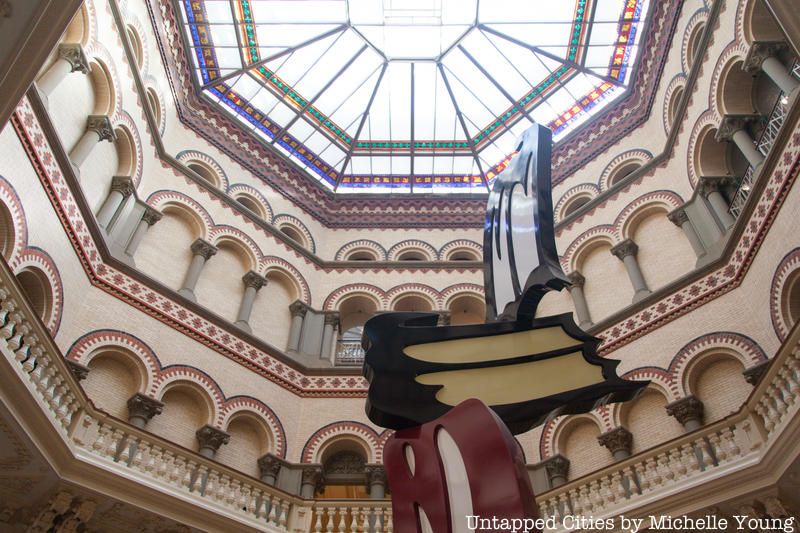
Built through graft, to be the epitome of Boss Tweed’s political machine, the Tweed Courthouse was the second oldest government building in New York City and cost $13 million in 1881 dollars. The interior is the only-known surviving cast-iron interior in the city and the 5-level atrium has a work by Roy Lichtenstein as its centerpiece.
The Tweed Courthouse, tainted by the rampant corruption of Boss Tweed, lay unused and fell into disrepair until a 1999 renovation headed by Mayor Guiliani. Now, the building serves as the headquarters of the New York Public School system and has a charter school in the basement. Public tours are available. See more of the interior of the Tweed Courthouse here.

Photo courtesy Park Avenue Armory
The Seventh Regiment Armory on Park Avenue is unique for its collection of interior styles. According to Interior Landmarks: Treasures of New York, it houses “the largest group of Aesthetic Movement interiors in America” and was described by the Landmarks Preservation Commission as “the height of American interior design within a single building for a single client.” Although it was an armory under the New York Station National Guard, the Seventh Regiment Armory was the only armory to be privately funded, and “was one of the most elaborate of the genre,” according to Gura and Wood.
It is currently being used as an art space by nonprofit Park Avenue Armory and has been featured in scenes of Boardwalk Empire. See some photos inside the armory here.
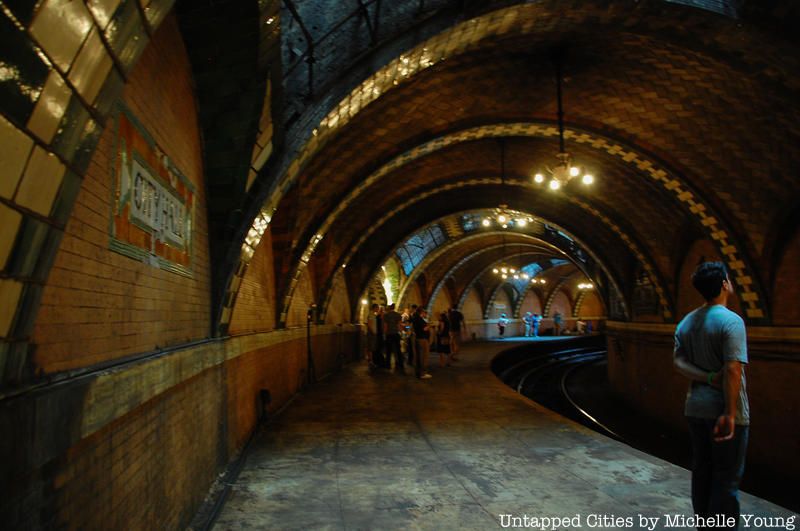
It seems quintessentially New York City that a subway station opened on the first day of the subway system and designed as the crown jewel of the system would now be closed off, but such is the case with the City Hall Subway Station. Though the architecture remains as beautiful as ever – with tiled ceilings by Guastavino and arched stained glass skylights, what did not stand the test of time was the usefulness of its curved platform deemed too short for the longer trains that came into use. It has been closed since 1945, but accessible via tours through the New York Transit Museum twice a year. See more photos inside City Hall subway station here and discover 6 other abandoned subway stations in NYC.

The Plaza Hotel has undergone so many changes and expansions over the years, it can be easy to overlook this actively used interior as a landmark. The first architect, Henry Hardenbergh, also built The Dakota apartments. Gura and Wood write in Interior Landmarks: Treasures of New York that “his ability to translate historical styles into spaces that were both picturesque and comfortable set the standard for luxury hotels.” There’s the original main lobby, in the Beaux-Arts style, the imposing Oak Room with a design fitting for its originally men’s only space, and the Palm Court tea room that “became the archetype for similar spaces around the country,” write Gura and Wood, designed as a “neoclassical fantasy.” Nearly all the items in the hotel were custom made, including the chandeliers. Read about the Top 10 Secrets of the Plaza Hotel.
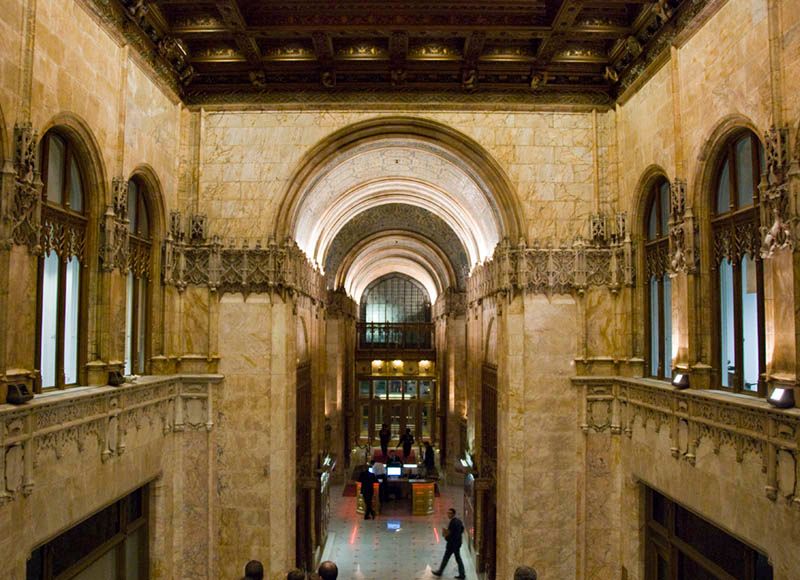
The Woolworth Building remains one of our favorite architectural wonders of New York City. Both its history and its architectural details are so rich, they keep on giving upon every visit. At face value, its clear that the building was intended as the physical manifestation of Woolworth’s success, but the public relation spin behind the building is as much a part of the history of the building as its aesthetic and structural elements. The result is a fascinating contrast of Woolworth’s contrasting thriftiness and his ideals of grandeur. After 9/11, the Woolworth Building lobby became off-limits to the public, but Untapped Cities offers tours of its lobby led by the great granddaughter of the building architect, Cass Gilbert.
VIP Tour of the Woolworth Building
Also, read about the Top 10 Secrets of the Woolworth Building.
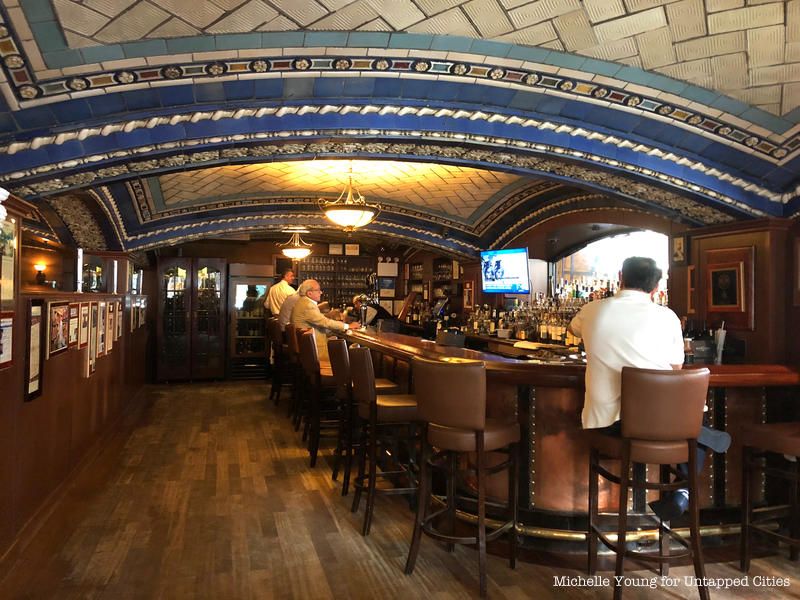
The Della Robbia Bar would have clearly been a stunning place to enter when it was built in 1913, but today it is even more remarkable for the fact that it is the “lone remnant of an interior ensemble destroyed in a 1960s modernization of the former Vanderbilt Hotel into a multi-use building,” write Gura and Wood in Interior Landmarks: Treasures of New York. The Vanderbilt Hotel was part of a larger grand plan around Grand Central Terminal, known as Terminal City. The Della Robbia Bar is also an example of preservation and landmarking by means of community, grass-roots efforts. In the case of the Della Robbia, the organization Friends of Terra Cotta campaigned for its designation.
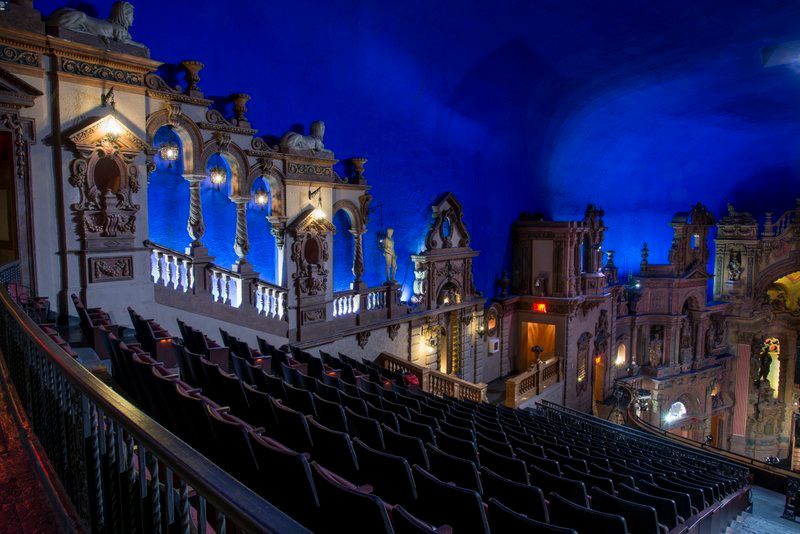
Photo © Larry Lederman courtesy Monacelli Press
If ever one had to illustrate the extent to which architectural opulence became an every day expectation, the obvious choice would be the 5 Loew’s Wonder Theaters (4 in New York City, 1 in New Jersey). The movies were certainly already an escape in the pre-Depression era but it’s astounding to remember that these were built for everyone fro the lowest to highest of social classes. The 45,000 square foot Loew’s Paradise Theater has an atmospheric ceiling, marble floors, elaborate plasterwork reminiscent of an Italian palazzo or church. The interiors were only designated in 2005 after restoration by a new owner, demonstrating that even places abandoned and damaged may have hope for preservation.
Look at photos of all five Loew’s Wonder Theaters here.
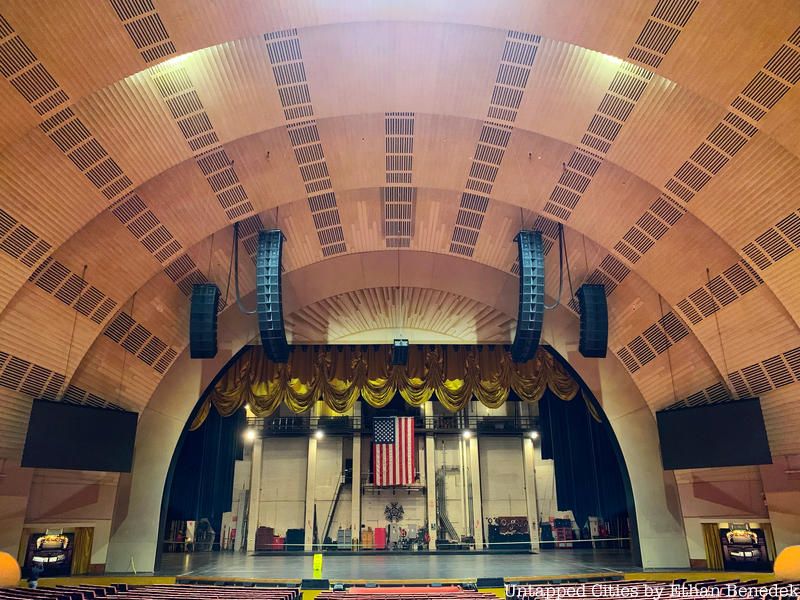
Like many other places in New York City, Radio City Music Hall faced the possibility of imminent demolition in 1978 and the quick reaction of the Landmarks Preservation Commission saved it with interior designation, “by far the largest interior designation in New York City” write Gura and Wood in Interior Landmarks: Treasures of New York. The space, with its Art Deco flourishes throughout, also has the world’s largest curtain and a complex technological system that supports a wide variety of performances.
Read more about the history of Radio City and its secrets here.
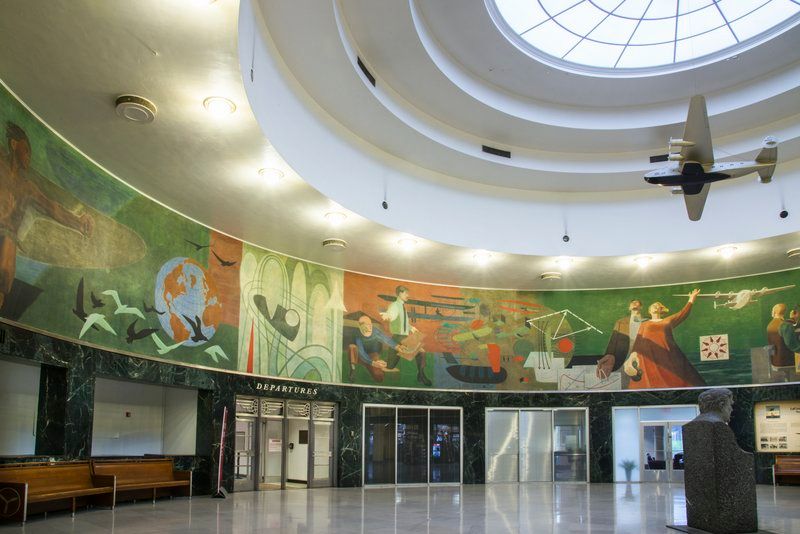
Photo © Larry Lederman courtesy Monacelli Press
It may take many visits to make the connection that yes, once airplanes did land by sea – hence, the Marine Air Terminal at LaGuardia Airport. With a clear architectural connection to the Works Progress Administration, the murals were once covered over because of their supposed connection to Communist propaganda. The circular terminal is a wonderful step back in time, like a visit to the TWA Flight Center (also an interior landmark), and today it is the “only active air terminal dating to the first generation of air travel,” state Gura and Wood in Interior Landmarks: Treasures of New York.

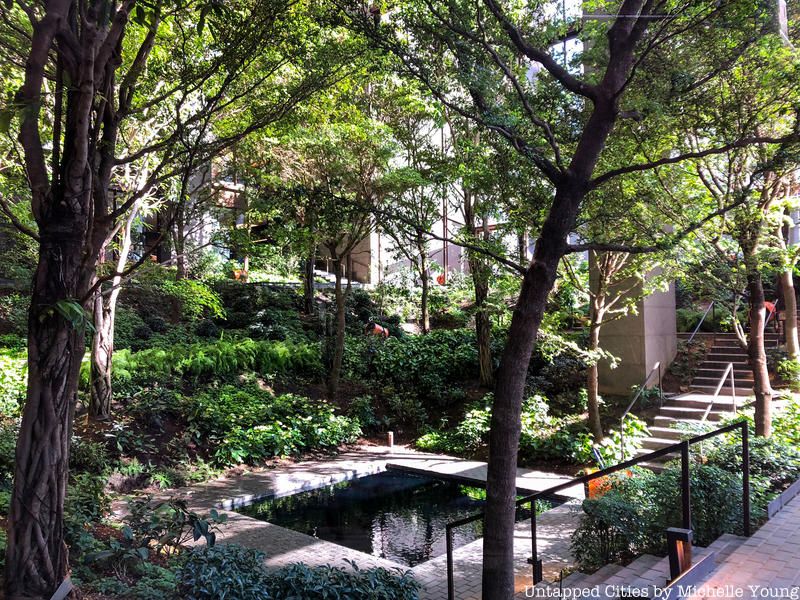
The Ford Foundation is the most recent interior landmark added to the list, and in addition to its architectural merits, is most notable for its lush atrium. One of the great examples of privately owned public interior spaces, there’s nothing else quite like it in New York City. Architecture critic Ada Louise Huxtable called the building “one of the most romantic environments ever devised by corporate man.” The original plantings were done by landscape architect Dan Kiley but have been replaced by tropical species better adapted to the space. Gura and Wood consider the atrium as an “extraordinary civic gesture.” Discover 10 impressive indoor public spaces in New York City here.
Not included on this list but obvious interior landmarks include Grand Central Terminal, the Metropolitan Museum of Art, the New York Public Library, the United States Custom House, the American Museum of Natural History, the Seagram Building and many more.
Get the book Interior Landmarks: Treasures of New York on Amazon and discover nearly 40 more interior landmarks. Get in touch with the author @untappedmich.
Subscribe to our newsletter